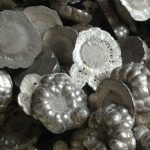Notice: Undefined index: sith_hide_share in /www/sites/alloy.wiki/index/wp-content/themes/likegoogle/single.php on line 32
Deprecated: get_settings is deprecated since version 2.1.0! Use get_option() instead. in /www/sites/alloy.wiki/index/wp-includes/functions.php on line 4862
Medical titanium bar implants began in 1969, when they were used mainly to repair teeth. After 40 years of research and development, titanium has become a widely used material in oral implants, and it has also been used to replace other tissues and organs in the human body.

After implantation, several replacement parts can be used to adjust the combination with the human body. By adjusting the shape of the implant surface, the bone can join with the implant surface to achieve the desired effect after several years. At the recent 86th Congress of the International Association for Dental Research, Swedish researchers spoke of a "nanostructure" that is a million times smaller than a Canadian dollar coin. A good bone-tooth combination can be achieved after 4 weeks of replacement with the tissue.
By adjusting the size and location of nano-tissue on the implant surface, not only can patients receive faster and more reliable treatment, but it can also help people understand the human-to-implant handover sequence and provide guidance for future research on implant surfaces.
Another notable feature of titanium alloy is its good biocompatibility, which makes it an ideal material for human implantation. More than a decade, many countries around the world and our country's research department, school of medicine, hospital and so on also will be a lot of work and the basis of clinical research, confirmation from the depth and breadth of titanium for ideal human implant materials, over the years made of titanium artificial femoral head, wrist, knee, artificial dental implants and bone repair, such as cardiac pacemaker, hundreds of cases.
The development of medical titanium rods needs more people to continue to explore, and continue to spread its role, so that more people benefit. This is the titanium industry's mission.
Guest contributors are welcome at the Alloy Wiki.It is a weekly wiki and guide on alloy information and processing technology, while also about the vast array of opportunities that are present in manufacturing. Our team of writers consists of a Machining Material Supplier / Machinist / Tool and Die Maker, a Biomedical Engineer / Product Development Engineer, a Job Development Coordinator / Adjunct Professor, and a President and CEO of a manufacturing facility.
Link to this article:The role of medical titanium bars in the medical industry
Reprint Statement: If there are no special instructions, all articles on this site are original. Please indicate the source for reprinting:Alloy Wiki,thanks!^^


